- Home
- slideshows
- miscellaneous
- One of the 7 wonders of the world is a 10,000-year-old city hidden in the desert - and in real life, it's more incredible than you can imagine
One of the 7 wonders of the world is a 10,000-year-old city hidden in the desert - and in real life, it's more incredible than you can imagine
I've been dreaming of visiting the city of Petra ever since I saw Indiana Jones and the Last Crusade as a kid. It seems silly now — the city has a far more interesting history — but I was amazed when they come upon the red-rock structure in the film.

I took a tour that left from Tel Aviv. After a seven-hour drive, we stopped at this viewpoint in Jordan over looking the valley where Petra is located. Even from this vantage point, the desert is stunning.

Our guide was a Jordanian man named Nizar Alhasani. Alhasani studied international relations at the University of Chicago. He told us that he'd spent some time advising the US military during the War in Iraq, but gave that up for tour guiding after his vehicle hit an IED.
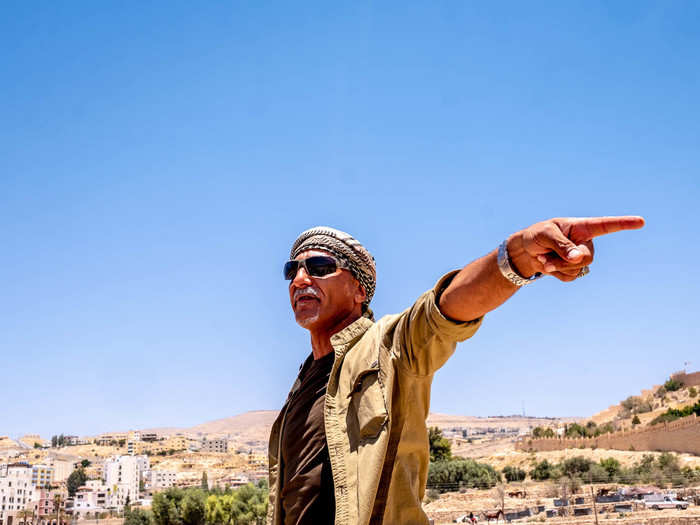
When you arrive at Petra, you are surrounded by shops selling the usual trinkets. Up until 1985, when Petra was named a UNESCO World Heritage site, the Bdoul Bedouin tribe lived in caves inside the city. The Jordanian government struck a deal with the Bdoul, Alhasani said, that allowed them exclusive rights to tourism businesses in Petra so long as they moved to a settlement a few miles from the site.

Source: Lonely Planet
To start, you walk down this open road for about a mile. Two thousand years ago, when the Nabatean Empire was at its peak, Petra was the trade terminus for the ancient Near East. One can imagine camel caravans traveling down this road to the entrance of the city, laden with spices and other precious goods.
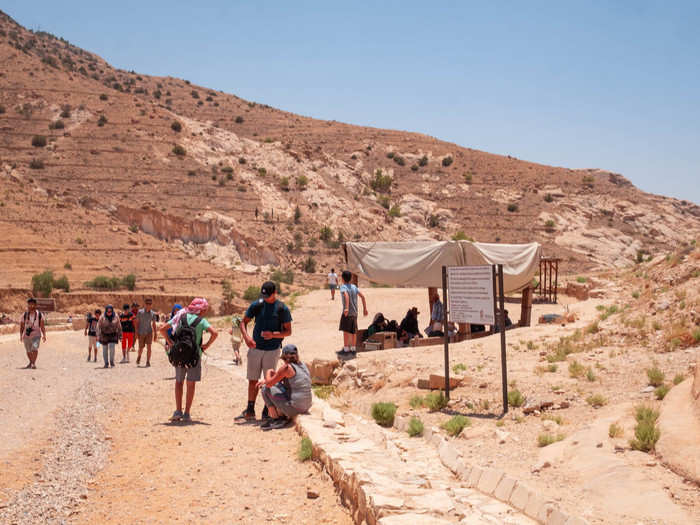
Source: Smithsonian Magazine
One of the main businesses run by the Bdoul is horseback and carriage rides to the main sites in Petra. But you have to be careful, Alhasani said: The Bdoul try all sorts of tricks to separate tourists from their money. One of the more popular grifts is to tell you the horseback ride is free and included in your ticket. At the end of the ride, they will tell you tips are not included and demand $50 or more.

The simplest way to avoid the grifts is a firm "No, thank you." We opted to walk, but, during the day, it's scorching hot. Some of the people in our tour group opted to buy a kaffiyeh, a traditional Middle Eastern headdress. When I saw how it kept the sweat from their faces, I was wishing I had bought one.

While it's not known exactly when Petra was built, most believe the area itself was first inhabited up to 10,000 years ago. The site truly began to prosper around 100 B.C.E when the Nabatean Empire became a trading hub. As you walk towards the center of the city, the "Bab Al Siq," or gateway road, is flanked by tombs.
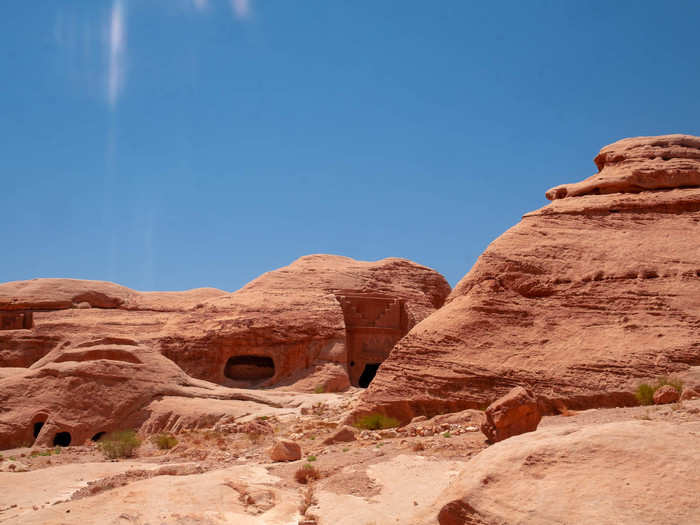
Along the Bab Al Siq are three massive "Djinn" blocks, which are square monuments carved out of solid sandstone. Little is known about why they exist.
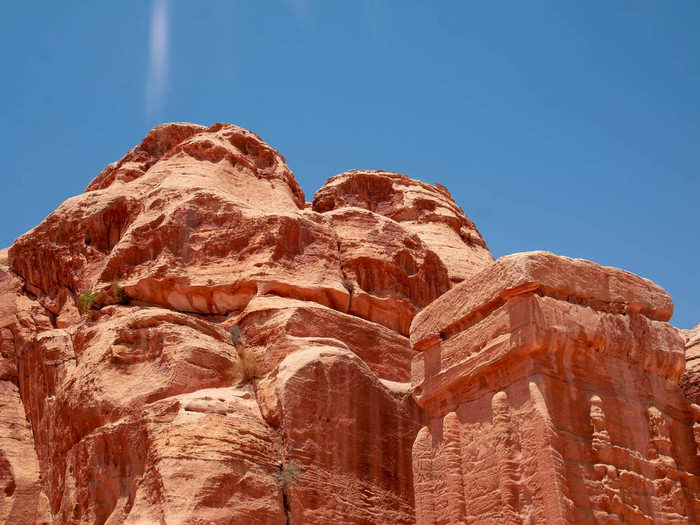
Source: Lonely Planet
The next structure along the road is the Obelisk Tomb. There are four pyramids above the tomb as well as statues that represent the five people buried there. The bottom floor of the tomb is a banquet hall, Once a year the family of the deceased came to hold a feast to honor the dead and clean the tomb, Alhasani explained.
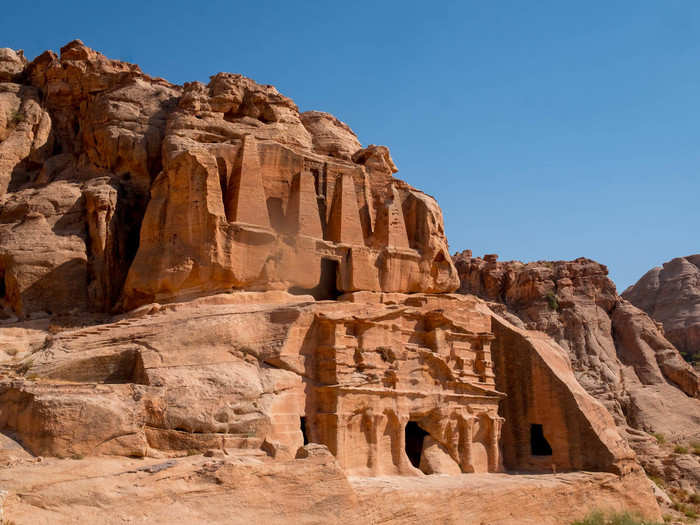
As we reached the bottom of a sloping path, Alhasani stopped the group. He explained that decades ago, tourists used to get hurt by flash floods when it rained at Petra. As the Jordanian government searched for a solution, excavators found this 300-foot tunnel cut into the rock. Built by the Nabataeans, the tunnel diverts flash flood water to two large cisterns that supplied water to the city.
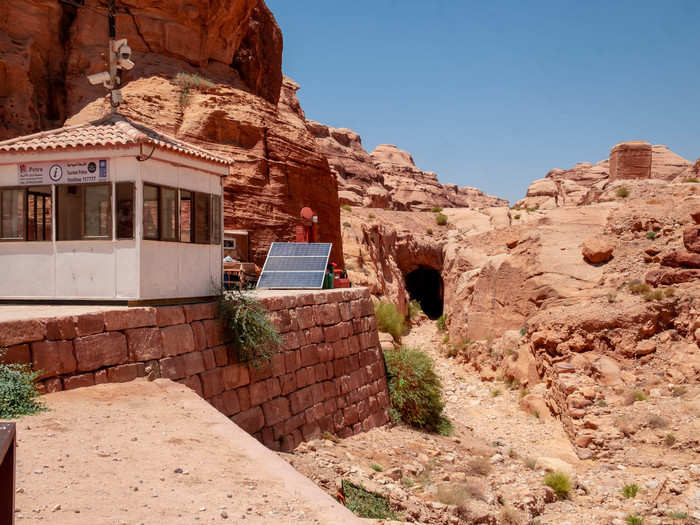
This road into the rock valley is where Petra begins. Called the Siq, the road is the ancient entrance to Petra. It is made of a split rock a little over half a mile long. Most of the rock split is a natural formation and reaches up to 250 feet in height.
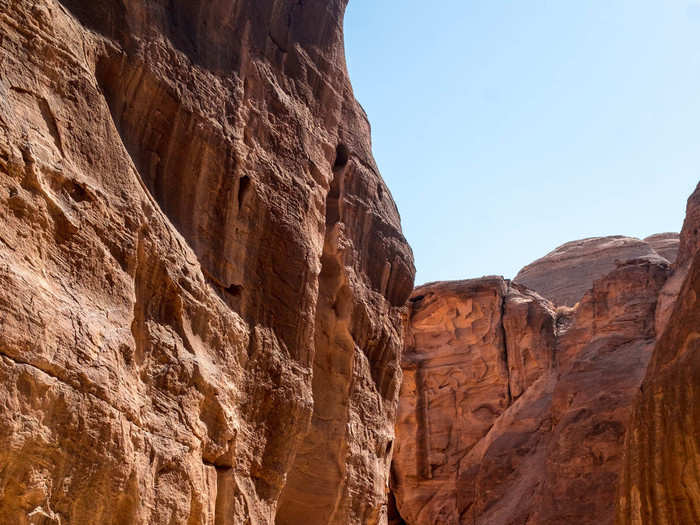
There are decorations all over the Siq, including sculptures and carvings of gods and animals. The imagery is a mélange of the Egyptian, Assyrian, Greek, Roman, and Mesopotamian cultures that passed through Petra by trade. There are even sculptures of elephants, which some take to be evidence of the city's connection to India.

Source: Lonely Planet
This broken carved sculpture depicts a trader, as evidenced by the hooves of the camel that stands beside him.
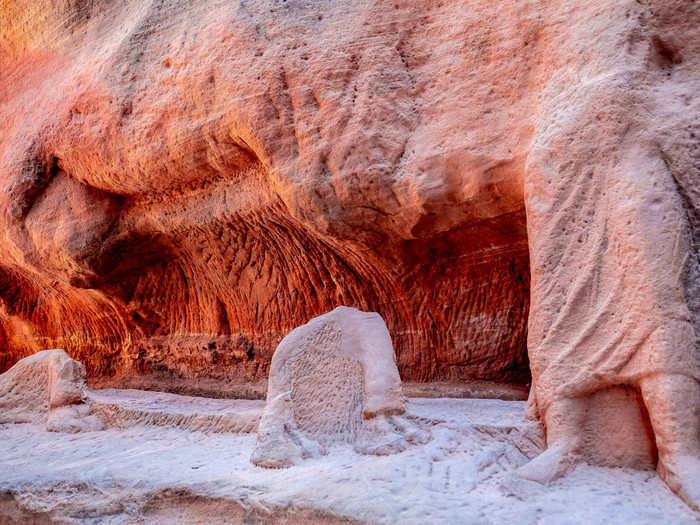
You have to stay alert when walking down the Siq. At some parts it is less than 10 feet wide. The Bedouins often barrel through on horse carriages carrying tourists. They won't stop or move out of the way for you.
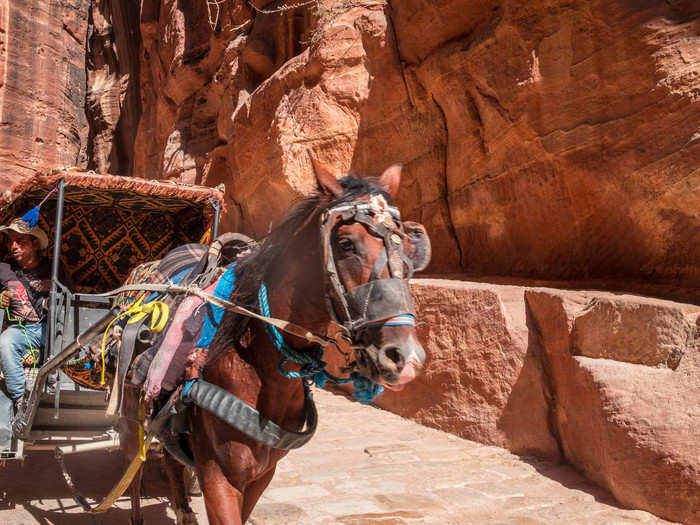
While most of the Siq is a natural rock formation, some parts were sculptured by the Nabataeans. But, in general, the Siq was kept narrow to keep out invading armies. The high walls around Petra, the surrounding mountains, and the winding gorge of the Siq all served as a natural defenses for those looking to raid the city. In many places, the Siq is only wide enough for two camels at a time.
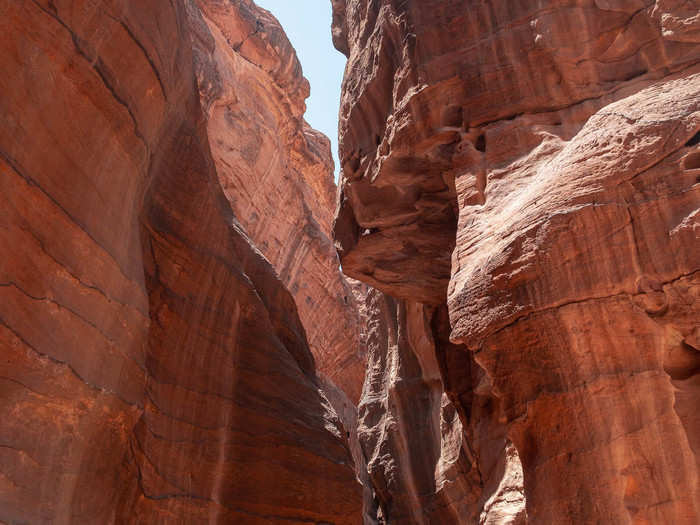
Source: Smithsonian Magazine
The name Petra comes from the Greek word for rock. In Arabic, however, Petra is called "al-madina al ward ah," which means rose-colored city. Slightly more poetic.

At its peak, Petra was home to around 30,000 people, by some estimates. The city was maintained thanks to an impressive water management system that used an extensive network of dams, cisterns, reservoirs, and aqueducts. Water was finally pumped to the city in clay pipes through the Siq to the rest of the city.
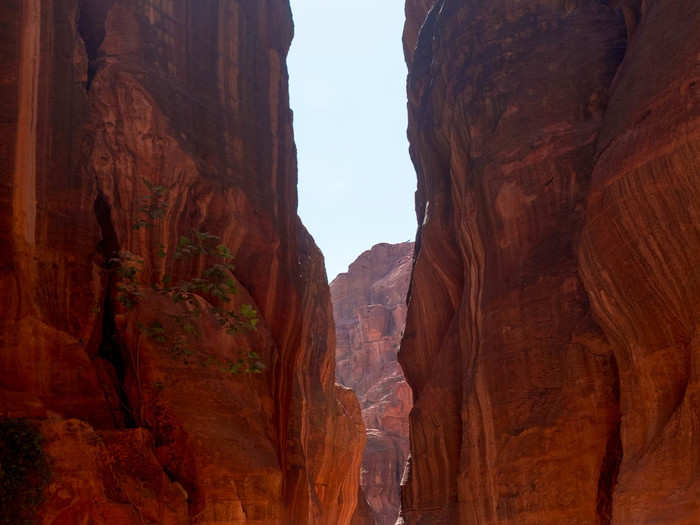
The moment when you reach the end of the Siq is more magnificent than can be expressed in words. One has to imagine world-weary traders at the end of a long journey, spotting the intricately carved rose stone facade and knowing they'd reached a great civilization.
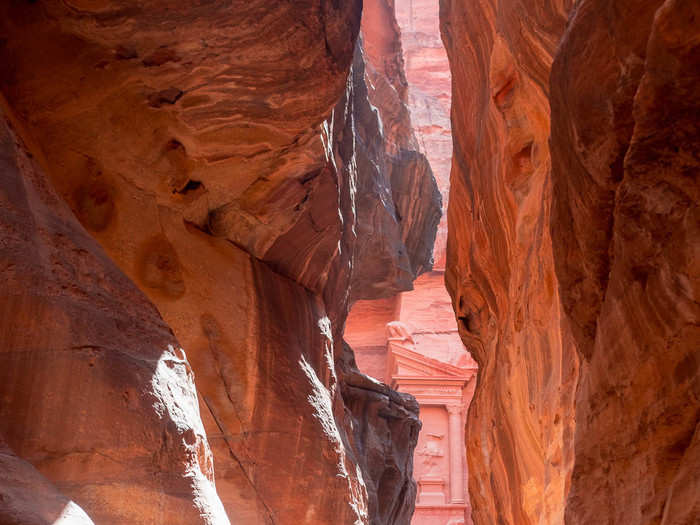
Al Khazna, or the Treasury, is the first structure you see upon entering the city. At 150 feet tall and around 100 feet wide, it is the masterpiece of Petra. Archaeologists are split on the purpose of Al Khazna. Many think it was the tomb of an important Nabatean king, while some believe it was a temple or a place to store documents.
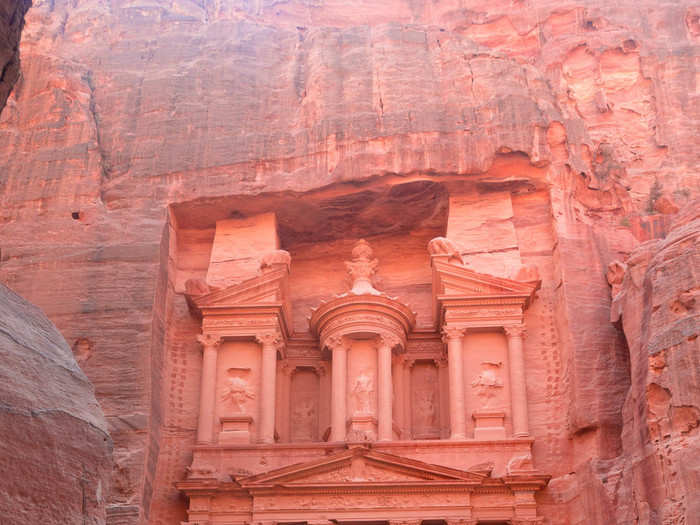
Source: VisitJordan, VisitPetra
Petra thrived under Roman rule up until an earthquake in 363 C.E. decimated the city. It went unentered by outsiders for nearly 600 years. Only local Bedouin tribes knew of its existence until Swiss explorer Johann Ludwig Burckhardt heard locals talking about the city while in Cairo. In 1812, he disguised himself as an Arab scholar and convinced a guide to take him to the Tomb of Haroun (the Arab name of Aaron, the biblical prophet), which he knew to be near the valley. As suspected, the guide took him through Petra.
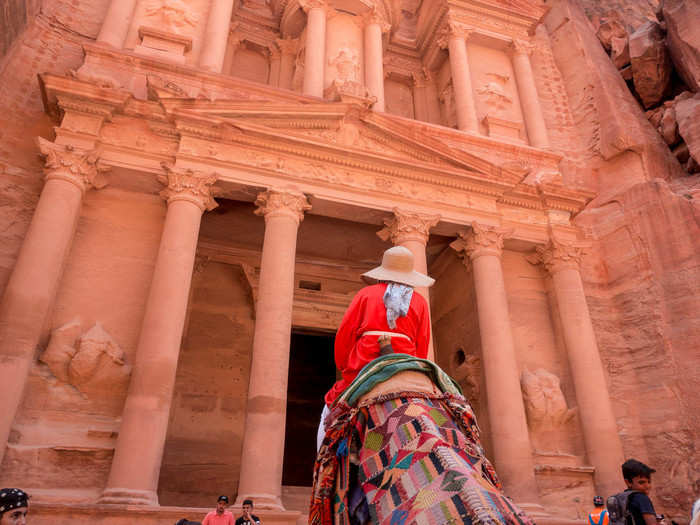
From the Treasury, a path left opens out into the rest of the city. Local Bedouin tribes had tried for centuries to hide Petra's existence as they feared treasure hunters would raid the city.
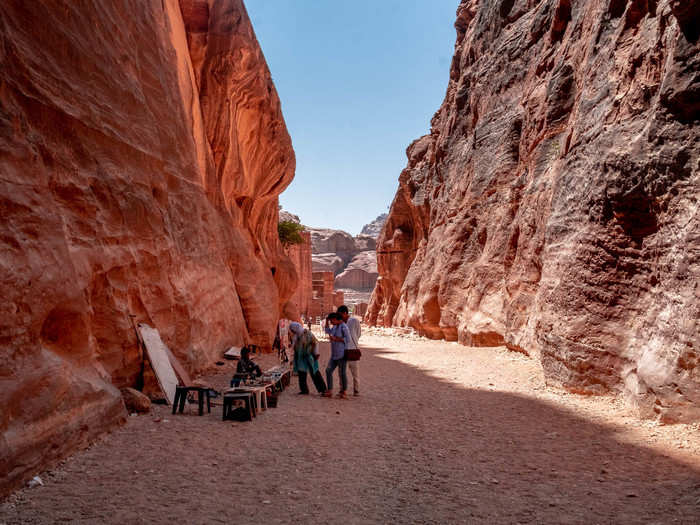
Source: Lonely Planet
One of the most impressive structures in the main city is the amphitheater. Built during the peak of the Nabatean empire, the theater could seat 8,500 people. When it was first built, it held 3,000 people and was primarily used for political functions. Later on, Romans expanded it and introduced the idea of using it for entertainment.
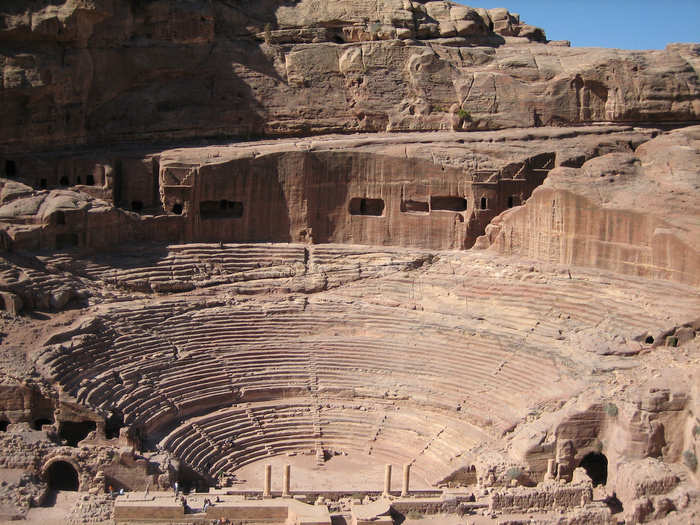
Outside the Siq and the Treasury is what is called the "Street of Facades." On both sides of the area are a cluster of tombs with crow-stepped attics. Some archaeologists believe these tombs held senior officials or princes.
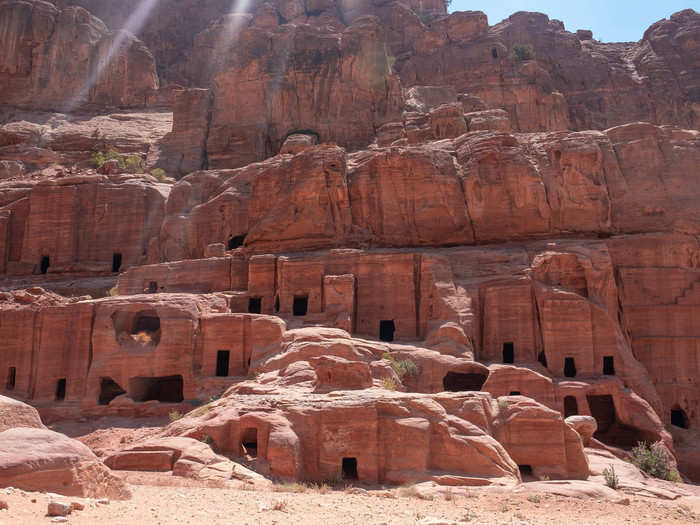
Along the way there are some tombs that you can actually go in. The area is believed to be the oldest burial ground in Petra.
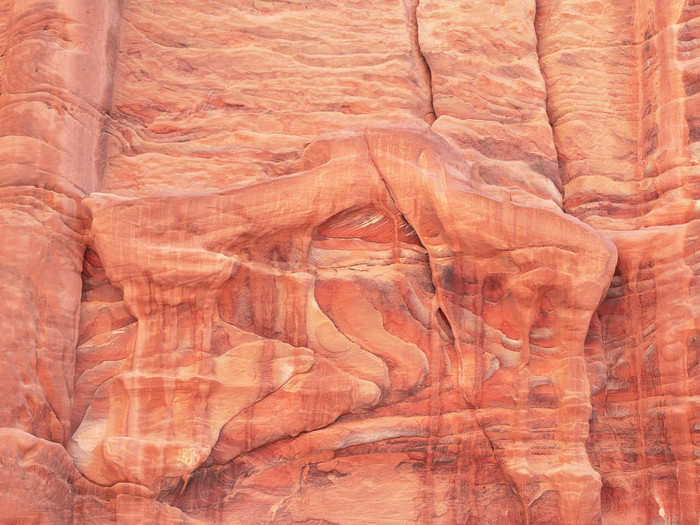
Source: Universes Art
Not a whole lot to see inside, if we're being honest.
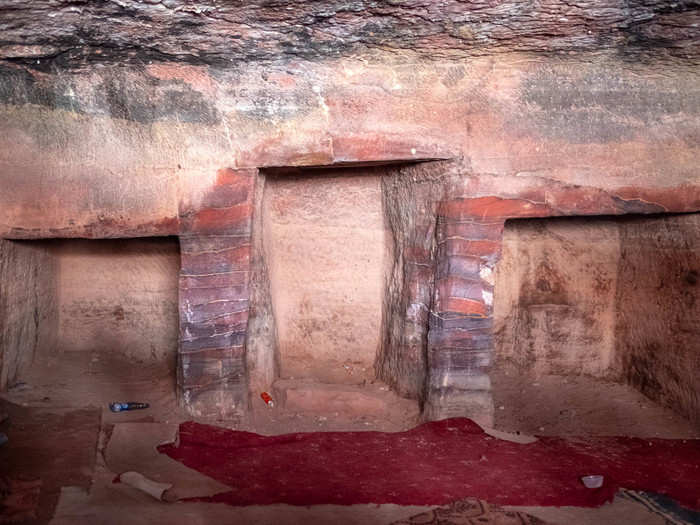
There are far too many sights to see in the city in one day. Many people spend four or five days exploring Petra. Our guide, Alfasani, said he once spent a month sleeping in caves and exploring the city and he still hasn't seen everything. With only four hours in the city, I had to do a lot of running around.
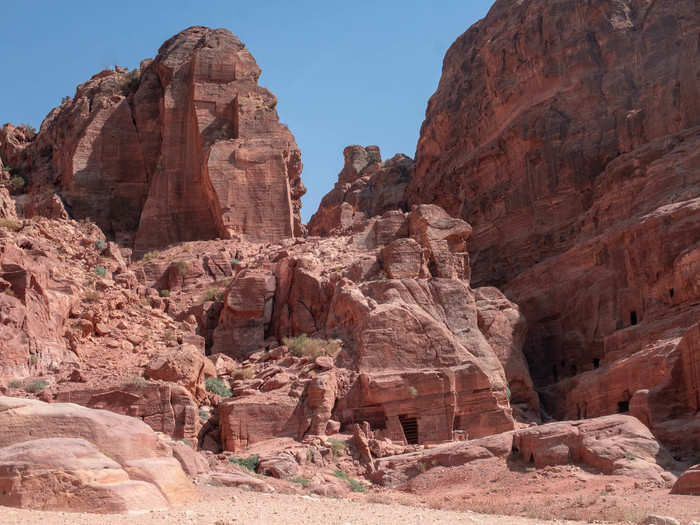
While other Western explorers and historians began to visit the city after Burckhardt, it was not until 1929 that archaeologists performed the first major excavations of the site.
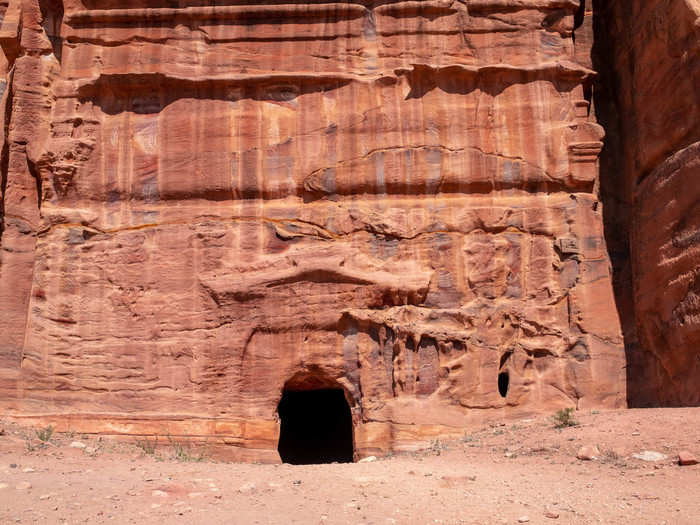
Source: VisitJordan
Members of the Bdoul tribe have set up stalls selling local handicrafts like this bottle of striated multicolored sands from the desert.
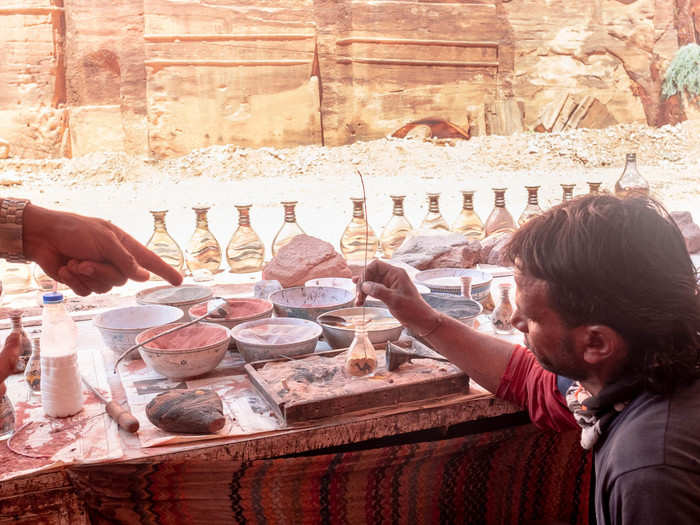
There are lots of souvenirs to check out in the shop. Or you could just enjoy the respite from the hot sun.
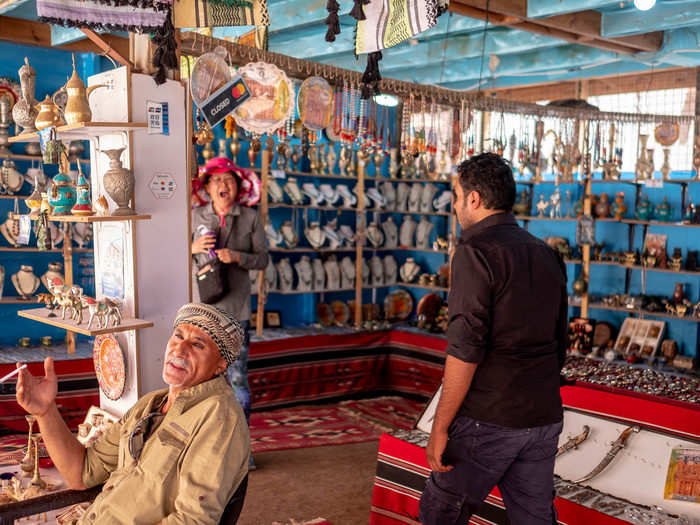
One of the most magnificent structures in Petra is the Royal Tombs. Located up a series of staircases, the Royal Tombs have richly decorated colonnades on both sides.
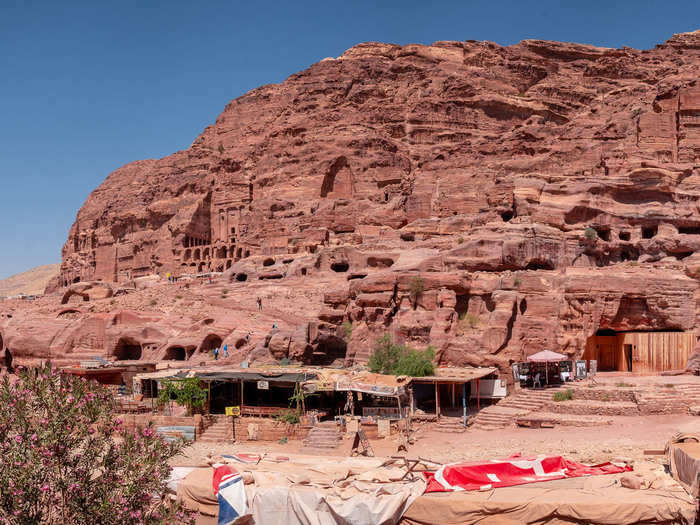
With only an hour or so until we had to leave, I ran up the steps to the Royal Tombs. In the heat, it was quite a workout.
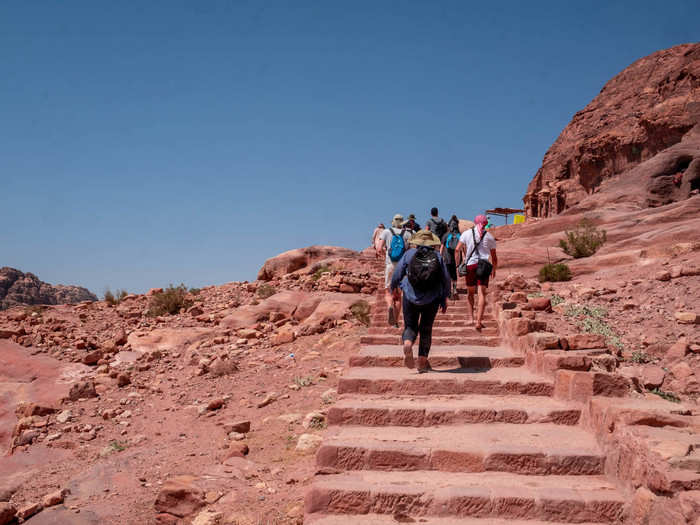
The main tomb in the Royal Tombs is known as the Urn Tomb, which gets its name from the jar carved at the top.
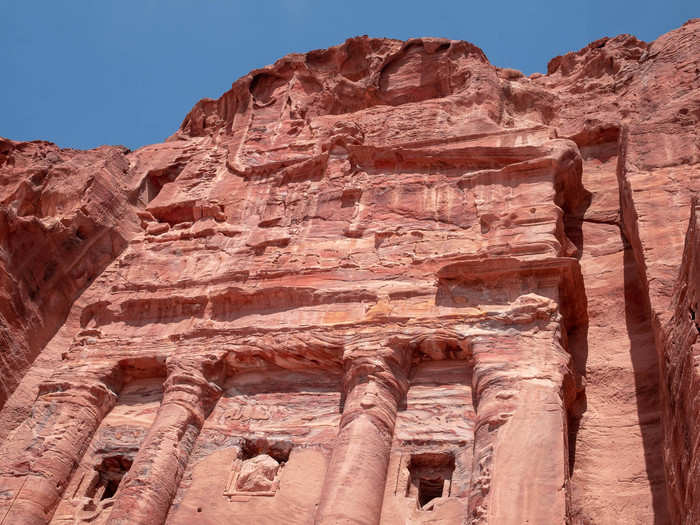
Inside the Urn Tomb are three niches that open to small burial chambers. During the Byzantine period, the tomb was converted to a church. While Petra began to depopulate after the earthquake in 363 C.E., it wasn't until the 700s that it was completely abandoned.
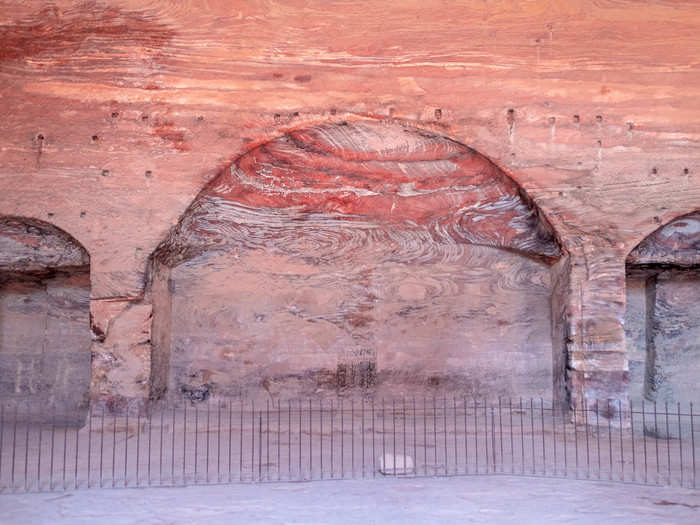
From outside the Urn Tomb, you get a spectacular view of the desert and the path to other sites in Petra. Of course, I didn't have enough time to head that way, so this view was going to have to suffice.
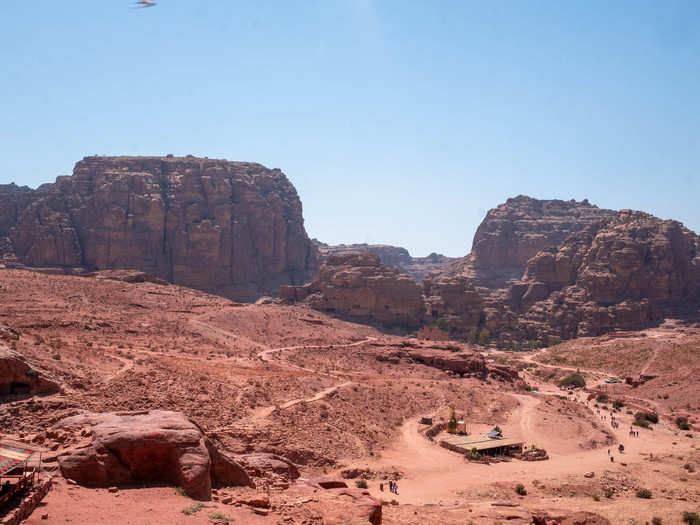
The last major structure that I got to see was the Silk Tomb. The sandstone of the tomb is some of the richest-colored in the site.
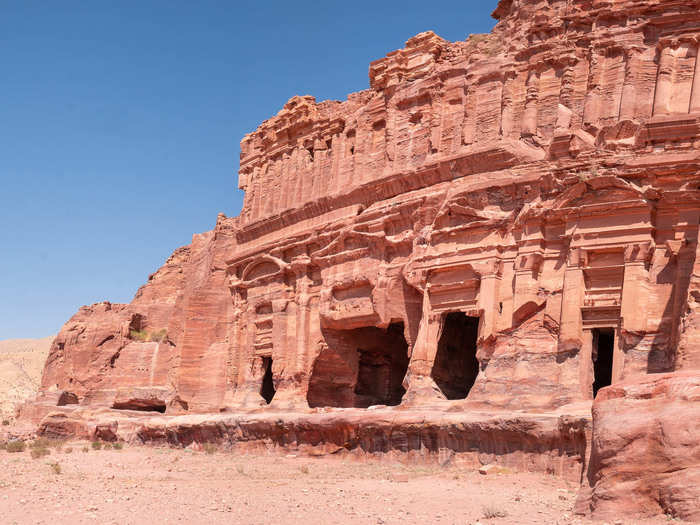
While Petra is famed as the "rose-red" city, it wasn't until the late afternoon that the city began to appear a deep red like this. In the middle of the day, the stone had a more pinkish or yellowish hue, depending on the light.
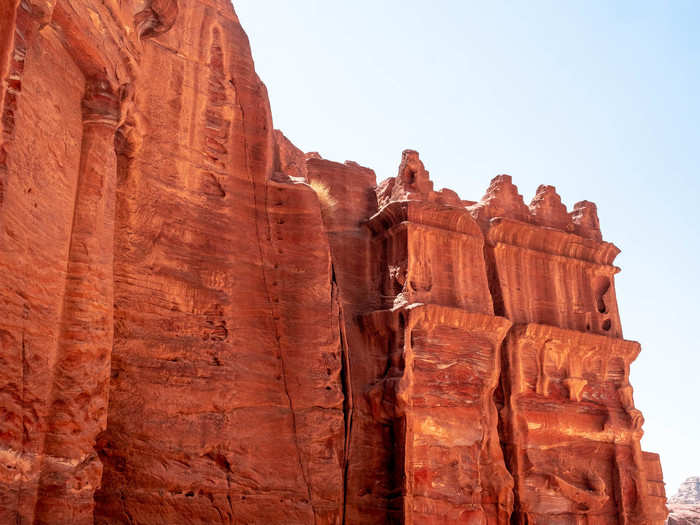
As I started the long walk back up the Siq, I was nearly clipped by a horse carriage. Seriously, you have to watch out. They really don't care if they hit you.
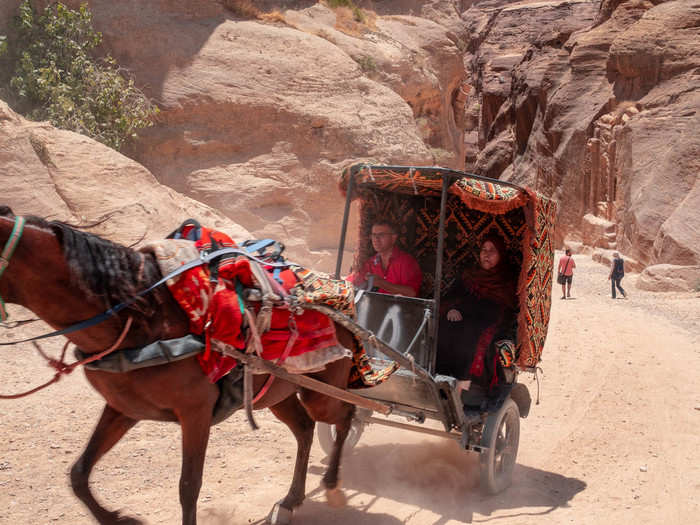
On the way back, the Siq was calm and practically empty. I wished that I was staying the night in Petra so I could leisurely walk up the path and admire the rich striations carved by thousands of years of water passing through the valley.
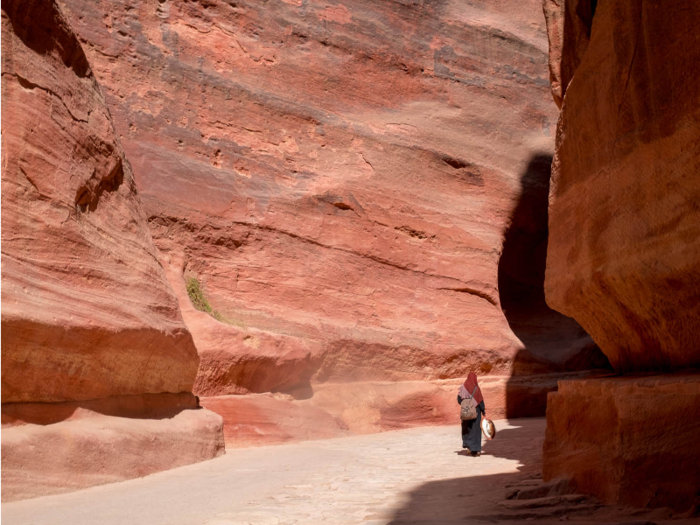
If you want my advice, opt for a longer trip to Petra. Half a day at the site was not enough and visiting during the hottest part of the day is not ideal. I'd like to come back and come at sunrise and sunset, when the light in the valley is most spectacular and the crowds thin. But for a first visit, Petra certainly lived up to the hype as a wonder of the world. I'll be back.
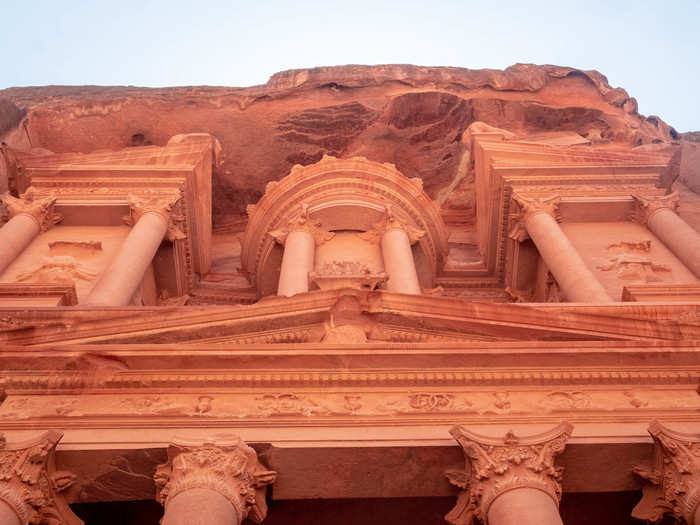
Popular Right Now
Popular Keywords
Advertisement